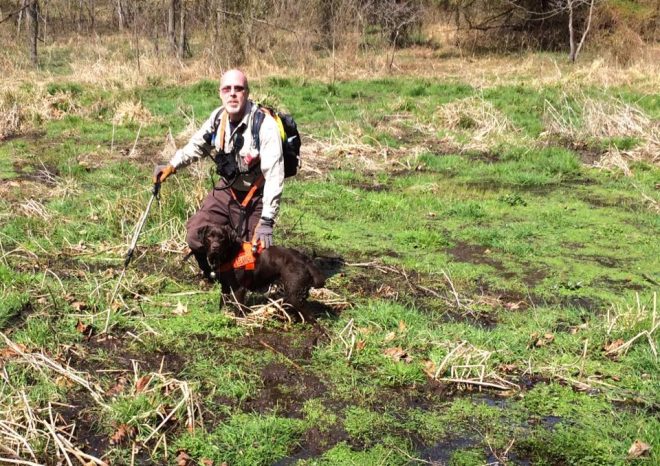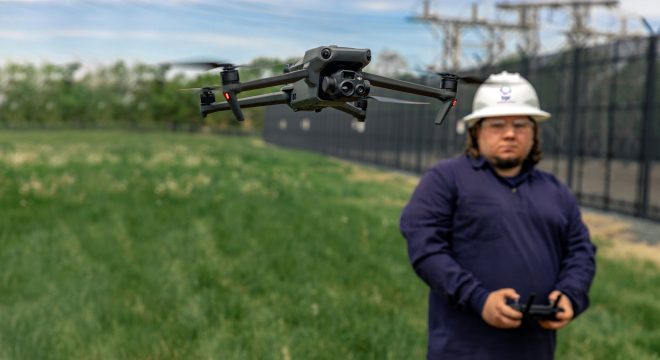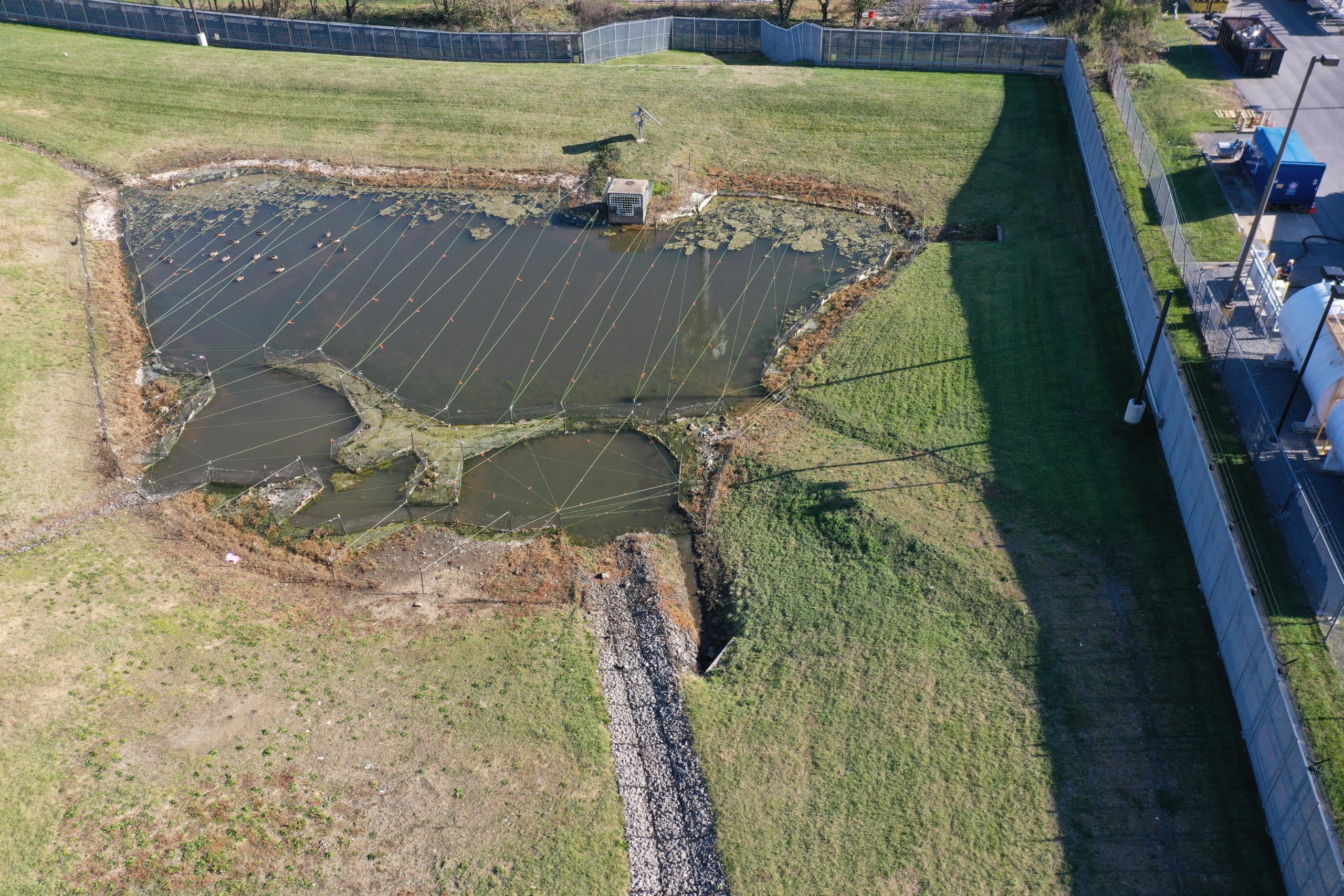
BGE’s “smart” pond uses electronic communications to control the release of stormwater – and keep pollutants out of Chesapeake Bay.
BGE has jumped at the chance to use new technology to innovate an outdated stormwater management pond. The pond is now one of seven “smart” ponds in Baltimore County.
This is the next step in BGE’s ongoing commitment to environmental protection and watershed improvements.
In the middle of the last century, “Water quality in the Chesapeake Bay was basically failing,” said Bob Bathurst, vice president of Century Engineering and creator of Smart SWM. With the adoption of the Clean Water Act in 1972, the nation turned its attention to improving water quality, which included stormwater management.
Our understanding of stormwater processes has come a long way since 1972. Recently, Bathurst developed a “smart” pond – a sophisticated and efficient way to protect watersheds. BGE is using Bathurst’s technology to reduce pollution in rivers, groundwater and the Chesapeake Bay.
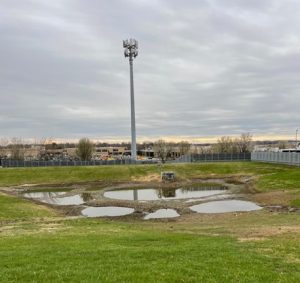
The water quality problem
Historically, soil and wetlands absorbed rainwater. Natural surfaces slowed runoff and prevented streams from overflowing and eroding their banks. The ground and plants absorbed pollutants, keeping them out of ground water and surface water.
As we pave over meadows, fields and marshes, we lose that filtration ability. In addition, streets and parking lots are filled with motor oil, lawn fertilizers, rubber from tires and other pollutants. When it rains, these end up in storm sewers and our waterways.
An early response to this problem was the development of retention ponds. They hold stormwater, with the goal of reducing flooding, erosion and water pollution. But over time, knowledge and technology changed, bringing improvements in environmental protection.
The EOB project
The pond at the Electric Operations Building (EOB) in Windsor Mill was designed in 1979, in the early days of stormwater regulation. A BGE team wanted to make use of investments in the large pond, while bringing it up to today’s standards.
Stormwater from the EOB property runs off to three major watersheds in Maryland, and they all empty into the Chesapeake Bay.
“I was able to integrate the technology, with the blessing of BGE, to have the pond achieve many modernized goals such as water quality, groundwater recharge, channel protection and flood control,” said Bathurst, who designed the new pond.
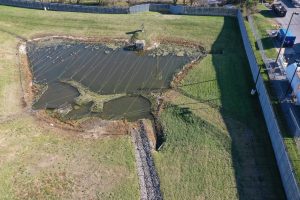
The smart pond
Smart SWM is Bathurst’s smart pond technology. And it’s really smart. It uses cloud-based technology with Amazon Web Services (AWS) to control the release of rainwater.
Bathurst had the “crazy idea” of how this would work one weekend in April 2013 (back when the available technology was not as advanced). Now, it’s become a highly functional reality.
Electronic tools collect real-time weather forecasts from the National Weather Service. Simultaneously, the pond transmits information of its own, like the depth of the water in the pool. Every five minutes, the smart system issues instructions based on the forecasts and the pond’s metrics.
In advance of a rain storm, the system can inform the pond’s operating equipment to release water, preventing the pool from overflowing. Property owners can view the performance data using a dashboard and set up different rules for the pond’s operations based on the weather or historical data.
The next step Bathurst expects to apply is machine learning. Once enough data have been collected, the pond will be programmed to be self-managing and no longer need frequent instructions.
The pond has been redesigned to allow various paths for water flow and release. This improves the pond’s filtration abilities. And the mechanism is powered by a solar panel with a battery.
“BGE has taken the most modernized approach you can to retrofit something that was designed in 1979,” Bathurst said.
Over and above standards
BGE and regulators expect the new pond to perform exceptionally well – beyond regulatory requirements.
The system earned BGE stormwater credits that could be applied to other projects. As a result, the company was able to make improvements to a nearby equipment storage property without installing additional stormwater protection. Kevin Hedge, senior environmental project manager at BGE, estimated the credits saved the company about $450,000 on the storage project.
Supporting a regional effort for environmental protection
To better understand the factors that affect regional water quality, Claire Welty, Ph.D., director of UMBC’s Center for Urban and Environmental Research and Education, is conducting an urban environment study.
Her team wants to learn how natural, geological processes below the earth’s surface interact with human-driven processes – and to what effect. Runoff from hard surfaces has a significant impact on water quality in the Baltimore area.
BGE will contribute data from the EOB site to inform Dr. Welty’s research.
Immediate and long-term benefits
BGEs investment will immediately protect the water reaching Chesapeake Bay. It will also contribute to critical knowledge to benefit an entire region’s water quality efforts.
A smart pond at Windsor Mill is just the latest way BGE demonstrates its 200-year-long commitment to the people and the environment of central Maryland.



